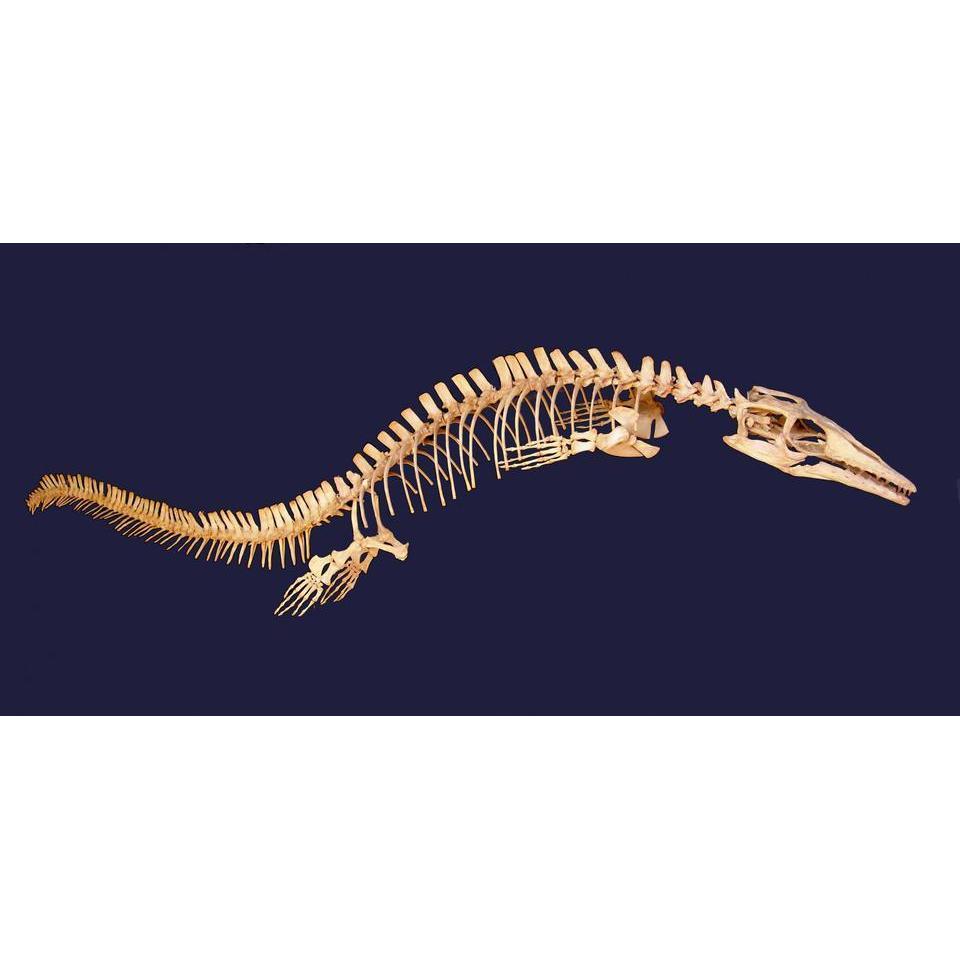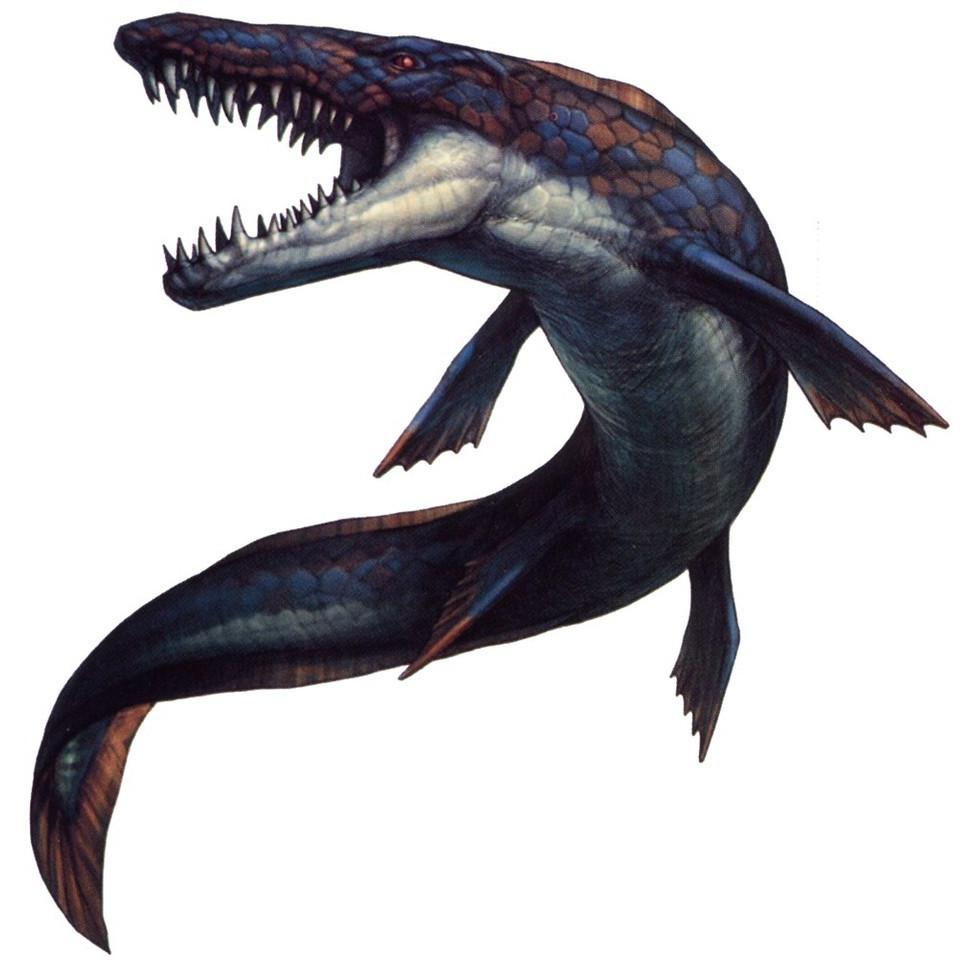Although they weren’t technically dinosaurs, mosasaurs hold a unique place in paleontological history: it was the discovery of a specimen of Mosasaurus in 1764, in a Dutch quarry that galvanized scientists into the realization that species could become extinct (and that the earth used to be populated by some very strange creatures). Mosasaurus (“lizard from the Meuse River”) was soon named by the renowned naturalist Georges Cuvier, and the general name “mosasaur” attached to other members of this ancient family. In evolutionary terms, mosasaurs were distinct from three other famous groups of marine reptiles, ichthyosaurs (“fish lizards”), long-necked plesiosaurs, and short-necked pliosaurs.
These sleek, reptilian predators may have been responsible for the extinction of the ichthyosaurs by the end of the Cretaceous period (not necessarily by eating them, but by out-competing them for food), and their quick, agile, hydrodynamic builds gave plesiosaurs and pliosaurs a run for their money. Essentially, mosasaurs ruled the seas for about 20 million years, until the K/T Extinction expunged most giant reptiles from the face of the earth 65 million years ago. While it would be tempting to speculate that mosasaurs evolved from ichthyosaurs and plesiosaurs, this doesn’t appear to be the case. The recent discovery of the small, amphibious Dallasaurus, which was capable of swimming as well as walking on land, hints that mosasaurs evolved from early Cretaceous reptiles very similar in appearance to modern monitor lizards. Less certain is the proposed evolutionary relationship between ancient mosasaurs and modern snakes; the two reptile families share sleek body plans, scaly skin and the ability to open their mouths extra-wide, but the rest is a matter of debate. In geological terms, one of the odd things about mosasaurs is that their fossils tend to turn up far inland, especially in the western United States and the interior of Europe and other continents. In the case of the U.S. this is because, back in Cretaceous times, much of North America was covered by the Great Interior Sea. A broad but shallow body of water that swamped large portions of modern-day Kansas, Nebraska and Colorado. Kansas alone has yielded three major mosasaur genera, Tylosaurus, Platecarpus and Clidastes. As you might expect with such a long-lasting family of marine reptiles, not all mosasaurs were in the same weight class or pursued the same diet. The biggest individuals of Mosasaurus attained lengths of 50 feet and weights of 15 or so tons, but other genera were considerably svelter: Tylosaurus, for example, packed only about 7 tons into its 35-foot length, and Platecarpus (judging by its fossil remains, the most common mosasaur of North America) was only about 14 feet long and a few hundred pounds.


